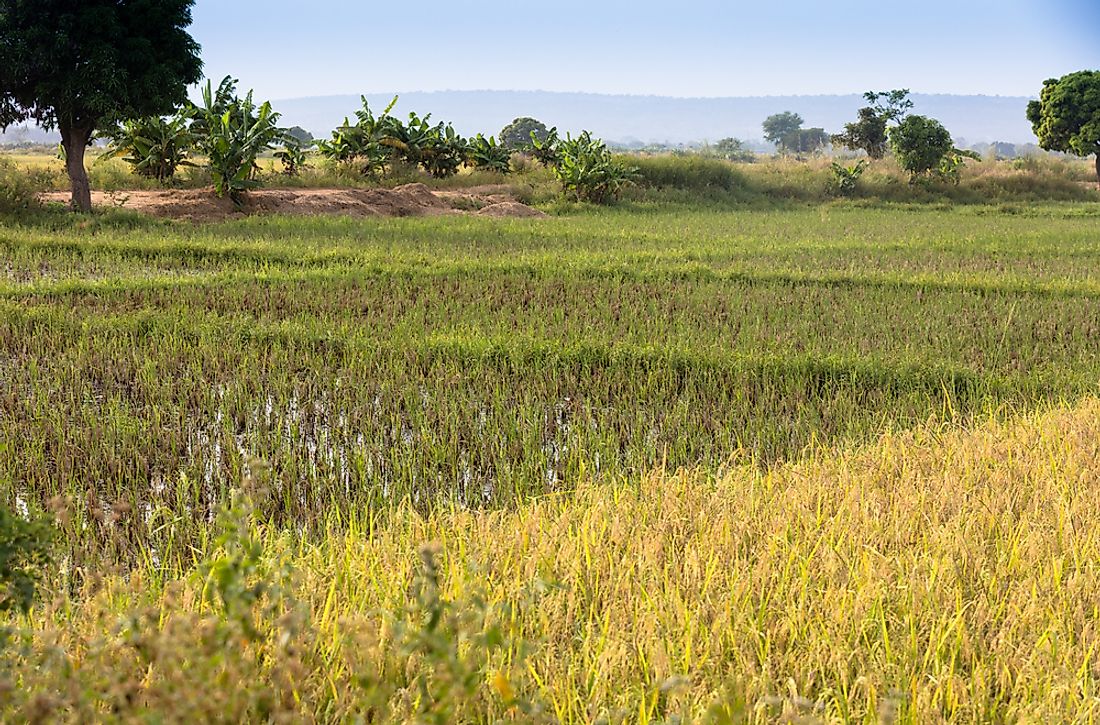The Biggest Industries In Burkina Faso

Burkina Faso is a landlocked nation in Africa. It has an area of about 105,900 square miles and shares borders with Mali, Benin, Niger, Ghana, Ivory Coast, and Togo. As of July 2018, the United Nations estimated that the population of the country was around 19.8 million people. The capital city, which is also the largest city, is Ouagadougou. From an economic perspective, Burkina Faso had a nominal gross domestic product (GDP) of $12.6 billion in 2017, which was a growth of about 5.9% from that of 2016. Despite the increase, a large section of the population (about 47%) still lives below the poverty line.
The most important industry in Burkina Faso is agriculture. Data shows that at least 80% of the population in the country depends on subsistence agriculture. However, there is a section of the population that works in the services and industry sectors, which also play a vital role in the economy. Unfortunately, most of the industries are owned by the government, which is ineffective. Consequently, they are largely unprofitable. These three sectors generate revenue mainly through exports, which had a value of around $3.14 billion as of 2017. In the same year, imports accounted for a slightly higher figure of $3.305 billion.
The major export partners of the country are Benin and Togo with the two nations taking in around 25.9% and 12% of exports from Burkina Faso respectively. Most of the imports into Burkina Faso come from Côte d'Ivoire (18.9%) and Pakistan (18.1%).
Agriculture in Burkina Faso
Currently, Burkina Faso is not a self-sufficient country when it comes to the production of its own food, despite having a decent level of potential in that sector. Data from 2017 shows that agriculture contributed a share of around 31% to Burkina Faso’s GDP. That figure is similar to the one from 2004, which shows that there has been some stagnation in the sector. Some common crops include cotton, sorghum, corn, millet, rice, sesame, groundnuts, and cottonseed. Other crops include sugarcane, cassava, sweet potatoes, cowpeas, and tobacco.
There have been some government attempts to modernize the sector, which is an activity that has had some success. A good example of a success story is cotton production, which accounted for at least 50% of the exports back in 2004. In that year, about 85% of the total cotton produced (about 210,000 tons) was exported. Another cash crop that has had some success is sugarcane, whose production stood at a significant 450,000 tons in the same year.
Despite the potential that agriculture has, the sector is constantly affected by rainfall fluctuations. The situation is made worse by the fact that the Sahara Desert is gradually encroaching onto the Mossi Plateau in the northern side of the country. Consequently, more people are forced to migrate toward the southern side of the country, which creates more competition for limited water resources.
Industry and Services
There are a few industries in Burkina Faso although the largest is arguably mining, which plays a major role in the economy. Some of the minerals produced include cement, gold, marble, phosphate rock, salt, pumice, volcanic rock, dolomite, zinc, and others. In 2012 alone, the country was the fourth largest producer of gold in the African continent. The Kalsaka gold project, which is a few kilometers from the capital city, had an estimated 6.5 million metric tons reserve. Such reserves and others motivate exploring companies such as Cluff Gold plc, Goldrush Resources, and Orbis Gold Limited. However, most of the gold is produced by slaves including child slaves.
In 2012, Burkina Faso had six gold mines although the gold is not as high grade as that found in South Africa. Interestingly, the gold deposits keep on increasing with plenty of new reserves being discovered frequently. For this reason, the Ministry of Finance has come out before stating that gold is the nation’s top earner through exports. In 2011 alone, gold earned the country about $247 million. Between 2007 and 2011, gold exports brought in a massive $747 million, which was about 64.7% of all the exports in that time and 8% of the nation’s GDP.
Another significant mineral is zinc with the country having a number of mines. For example, the Perkoa zinc deposit to the west of the capital had the potential of 130,000 tons per year when a feasibility study was done in 2005. Just like gold mining above, the main companies involved are foreign ones.
The services sector is dominated by the banking sector although it is extremely concentrated. At least 90% of the country’s financial system is controlled by banks. There are 11 banks and 5 other financial institutions. Overall, however, banks play an important role in the economy as they contribute about 30% of Burkina Faso’s GDP. The banks have sufficient operating capital although they remain at the mercy of fluctuating cotton prices.











